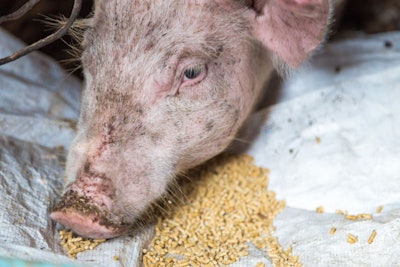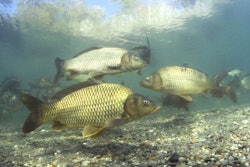
An update on mineral nutrition was offered by a prominent US researcher during a European event last year in France.
It might seem unusual to get information on mineral nutrition developments happening in the U.S. while attending a conference in France, but that was indeed the topic discussed by Gretchen Hill of Michigan State University during the joint academy by Animine (France) and the European Federation of Animal Science.
As it appears, we all continue to be interested in what happens across the pond (in both directions) and the U.S. remains a powerhouse when it comes to non-marketing-oriented research from academia and research institutions. So, it is very interesting to present a summary of this presentation for a wider audience as mineral nutrition remains a very current topic across the globe.
A major starting point was the discussion about what is and what is not meant by the terms bioavailability — something that continues to confuse nutritionists. In simple terms, bioavailability does not refer to the portion of a mineral that is absorbed or even stored, but that which is actually being used in a physiological function.
In addition, it was stressed that major scientific advances in recent decades came from the identification of intestinal mineral transporters that enable the active absorption of trace minerals in ionic form. It has also been elucidated that the oxidation state plays a role in absorption. For example, in the case of copper, the divalent form must be reduced to its monovalent state before absorption.
Update of zinc nutrition
The role of zinc in pig nutrition is well known and appreciated, with deficiency symptoms such as parakeratosis and decreased growth identified long ago.
What is now being realized is that zinc might be the first limiting trace mineral, especially in weaned pigs. This emphasizes the importance of zinc not only on skin health and growth, but also on boosting immunity with a potent anti-viral role. This is accomplished not only indirectly by enabling the immune system through the myriad enzymes and components in which zinc plays a functional role, but also as a direct anti-viral component.

Piglets fed high levels of ZnO coped better during a challenge of transmissible gastroenteritis (TGE).
The latter is becoming even more important as global viral threats remain largely without solutions and nutrition once more is called upon to offer a helping hand.
For example, in vitro tests with foot-and-mouth and transmissible gastroenteritis viruses showed that an excess of zinc inhibited critical components of the viral replication system leading to substantial control of the viruses. This might explain partially the beneficial effects of high zinc dosages in weaned pigs that suffer frequently from gastrointestinal viral diseases.
This is in addition to the role zinc plays in the gut level as far as microbial control is concerned. There, scientific opinion leans toward not so much its bacteriocidic properties, but in the amplification of bacterial diversification that enables the establishment of a healthier ecosystem.
Today, in the U.S., weaned piglets are fed about 2,000 ppm zinc from zinc oxide, for about two weeks, often in combination with high dosages of copper. For older pigs, requirements are established at about 50-60 ppm zinc, but research on which this figure is based is several decades old. This must be rectified as the role of several factors, such as genetics, housing, novel mineral sources, phytase and even housing have not been taken into account.
Update on iron nutrition
The role of iron has been reinstated. It was stressed that too much iron — and too much of it in free form — are not beneficial for the pig and the organism, respectively. Too much iron in the feed boosts bacterial proliferation, and especially those of pathogenic propensity, whereas too much free iron leads to excessive oxidation.
Emphasis was also placed on early iron supplementation. Questions regarding dilemmas over one or two iron injections, oral vs. injectable iron, and supplementation timing were answered. In brief, it was recommended that a single injection at one to three days after birth remains the most potent form of iron supplementation. Some information regarding the interaction of iron with zinc was also provided, with emphasis placed on maternal zinc and iron offspring. The better the zinc status of the mother, the higher the iron reserves of newborn pigs — something that tells us gestating sow nutrition is not as simplistic as we once thought.
Update on copper nutrition
Copper absorption remains a topic little appreciated by nutritionists. Few realize that copper is absorbed mostly in the duodenum, a very short part of the small intestine. And, its absorption is affected by high levels of zinc and iron and the phytate compound (not the enzyme phytase.).
Once inside the organism, ceruloplasmin — a copper-based protein — is responsible for copper blood transport, and it is also an acute phase reactant protein during infections.
This protein increases during an infection and is responsible for removing iron from infected sites. Again, we see the complex interactive nature of all different minerals. As mentioned above, weaned pigs in the U.S. receive a generous dosage of copper along with zinc, for pharmacological — gut health — reasons, something that is being progressively phased out in the EU. This has to do with the excretion of zinc and copper excesses in the field, something that was discussed in detailed and concerns all involved parties.
Questions we need to answer
As we progress our understanding of how trace minerals such as iron, zinc and copper are being absorbed and utilized, we need to continue researching areas we considered up to now as firmly established.
For example, what are the true zinc requirements of sows now that research has shown benefits from additions of up to 500 ppm in their feeds? All new research must establish requirements not only on traditional growth and efficiency parameters, but also on health aspects using more sensitive and relevant biomarkers.
The question of antibiotics reduction in animal production remains and the use of trace minerals like zinc and copper, when properly utilized, can contribute to preserving sensitive antibiotics for human use.
But, how can we work around the problem of feeding excessive amounts of these minerals that will not end up in the environment? Will novel forms of zinc and copper play a greater role in the future and what is the role of phytase among all these issues concerning trace mineral nutrition?
Clearly, there is a bright future ahead for young researchers.

















